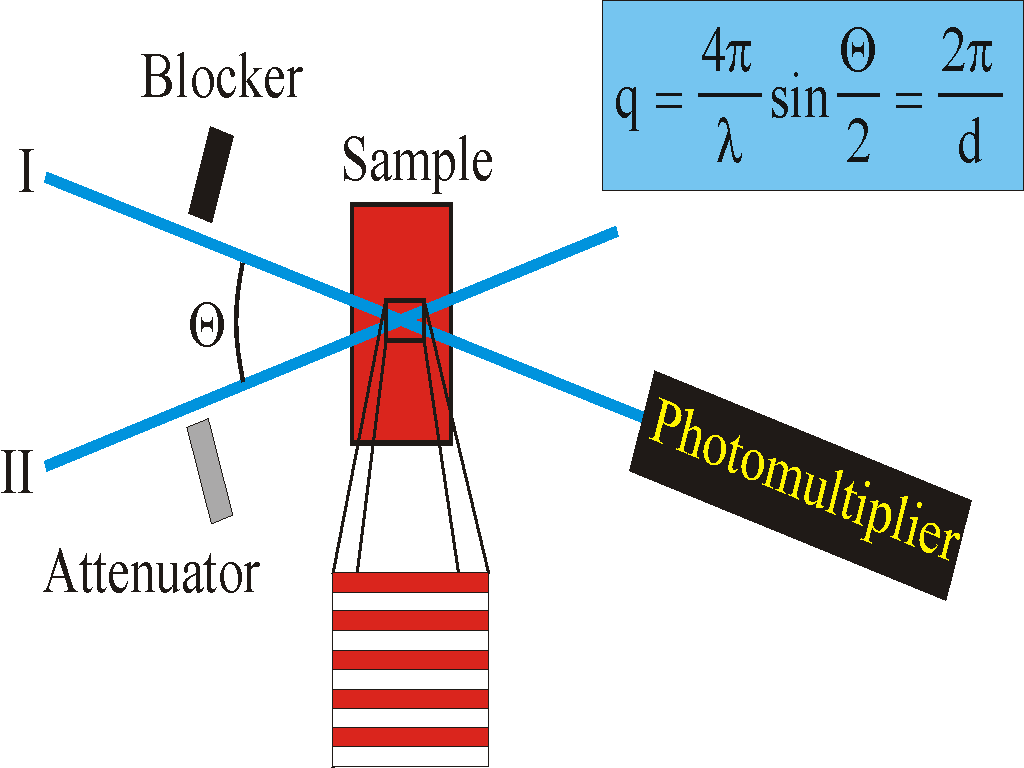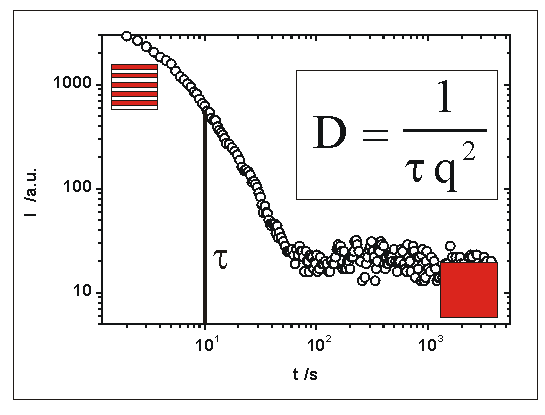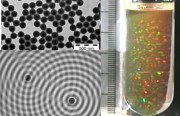Forced Rayleigh Scattering (FRS)

By interference of the two laser beams one creates a simple hologram in the sample volume. The grating distance d (and thus the scattering vector q) of the interference grating is determined by the angle between the two beams and their wavelength. The dye absorbs at the applied laser wavelength and reacts to a colorless compound. Thus the interference grating is stored in the sample. After blocking beam I one can follow the diffusive destruction of the grating by measuring the scattered intensity of the attenuated beam II. Typically, one measures exponential decay curves (see figure below). From these one extracts relaxation times t, which lead to the diffusion coefficients.


